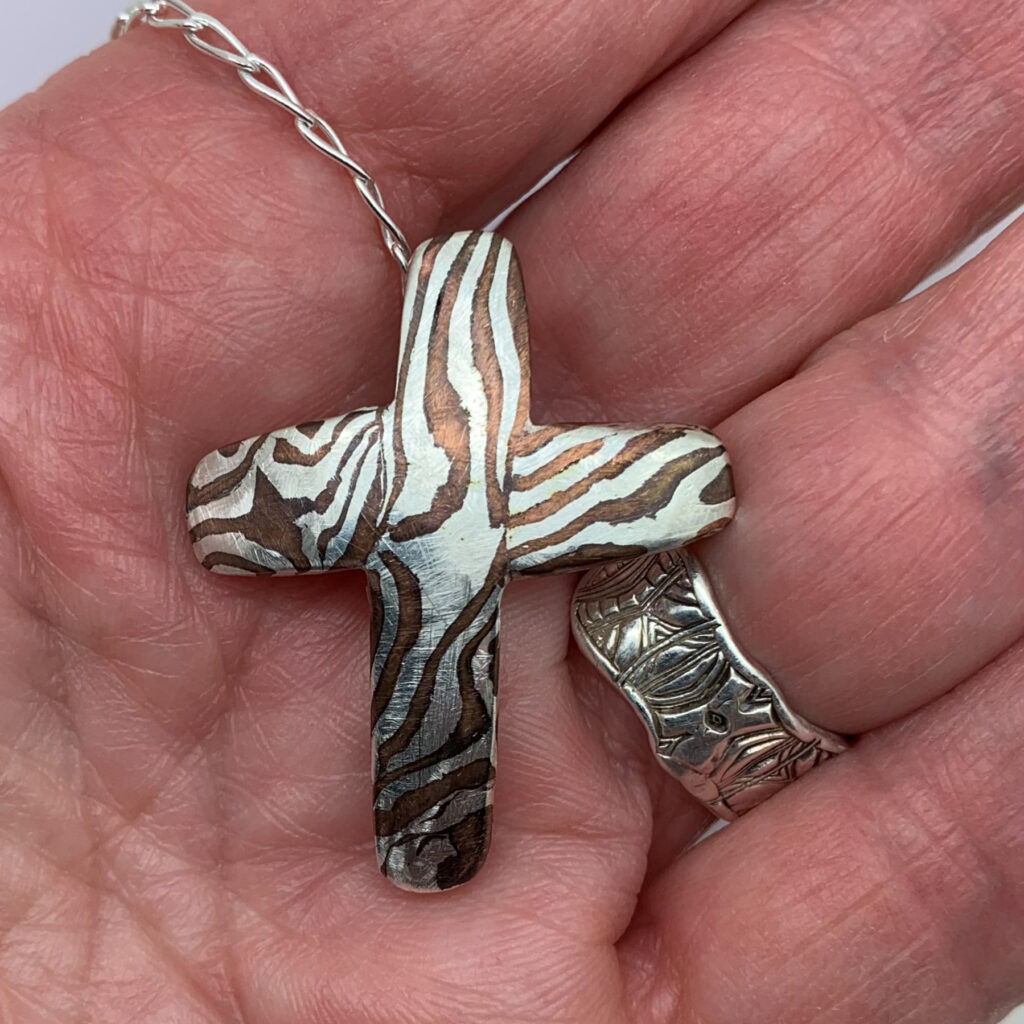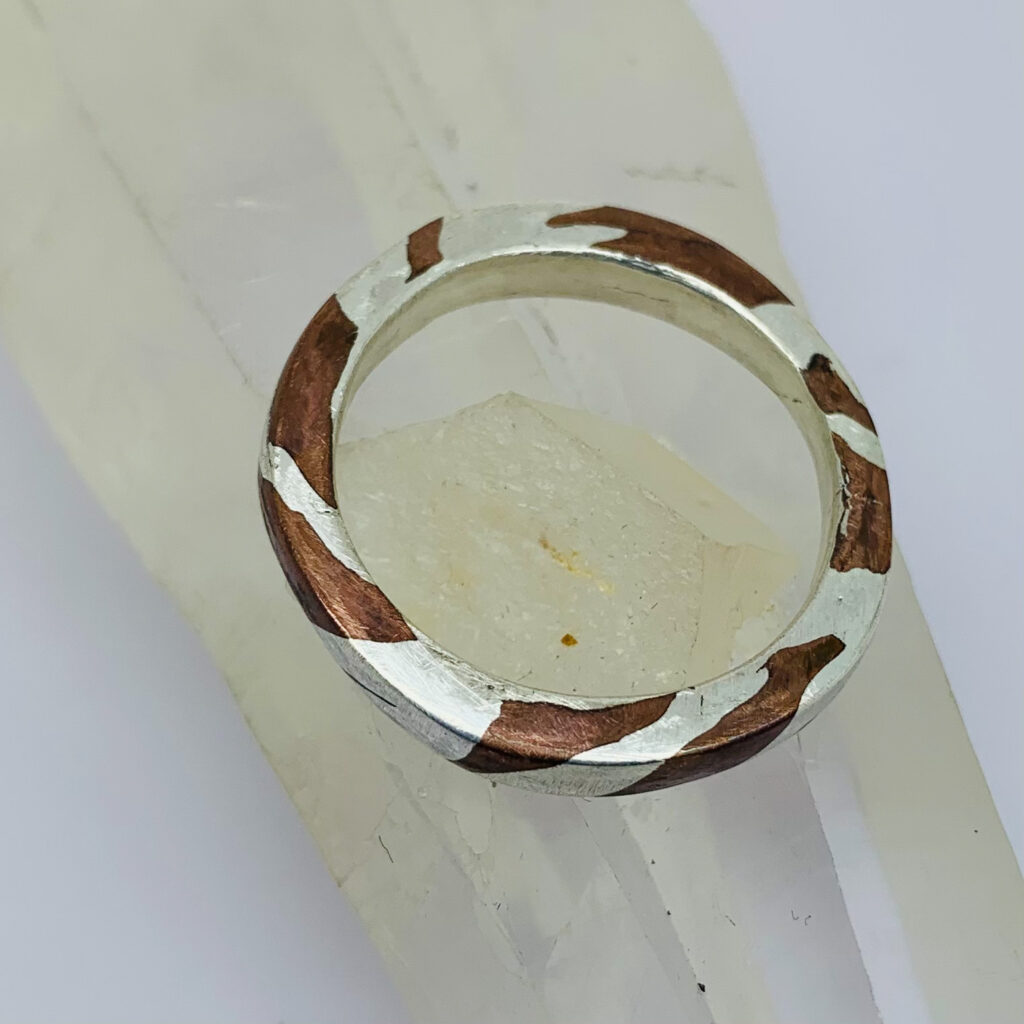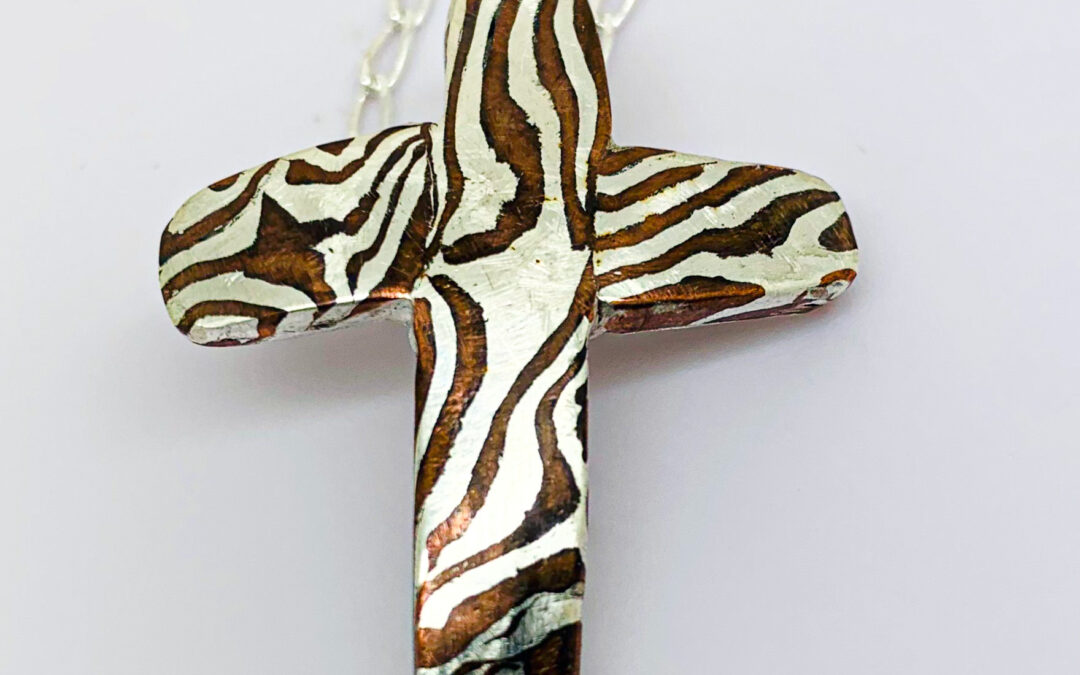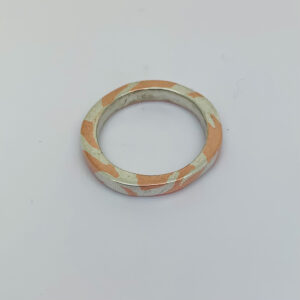Mokume Gane has intrigued me for years. I couldn’t figure out how they could make the wood grain designs using different color metals. So my curiosity caught up with me!
Mokume Gane

Mokume means wood eye and Gane means metal. It is derived from the ancient Japanese sword-making technique that used layers of mild steel and carbon steel forged together to create blades of great strength and durability in sword making. A fine woodgrain pattern on the blade is the tell-tale sign of Damascus steel.
History
The first recorded use of mokume gane was by Denbei Shoami (1651-1728) who lived and worked in Japan. Shoami adapted the principles of forge-welded Damascus steel to create mokume gane. Advanced sword-making techniques used in Japan at the time were pivotal in the development of mokume gane because the art of sword making was so accomplished that it directly influenced all forms of metalwork.
The Process
To achieve a successful wood grain pattern many layers of different metal sheets were stacked together. Then intensive heat and pressure were used to form bonds without melting the metals. Then the simple stripes could be forged and carved to increase the pattern’s complexity.
Today’s Metalsmiths
Contemporary metalsmiths have rediscovered Mokume Gane as an expressive material with a subtle palette of precious metal colors. Due to the labor-intensive nature of fine Mokume jewelry, it remains an uncommon jewelry technique, avoiding association with mass-produced commercial jewelry.
Mokume Gane using Metal Clay
It took the makers of Metal Clay in Japan three years to figure out how to use Metal Clay to achieve the highly desired Mokume Gane patterns. And the original Metal Clay artists had to go to Japan to learn this technique. Thank God there are people out there who have the gift to teach!
The Metal Clay Process
Personally, I have found this process labor-intensive, but I still love it! It is something I’m working on mastering. So for example, it took me three tries to just master one ring! There is a feel to working with two different metals, Silver and Copper, for example, which both require being moist to work with and yet dry at different times. But master it I will!
The polishing time is also far more intensive than just working with precious metal clays. But worth it? Oh yes!
Finishing Touches
There are two ways that a piece can be finished. One is to leave the metals as they are. In this instance, the copper shines.
The other way is to add a patina, which simply means that the copper is aged, making the two metals pop.

I’m curious. Which do you like best, with or without patina?




Recent Comments